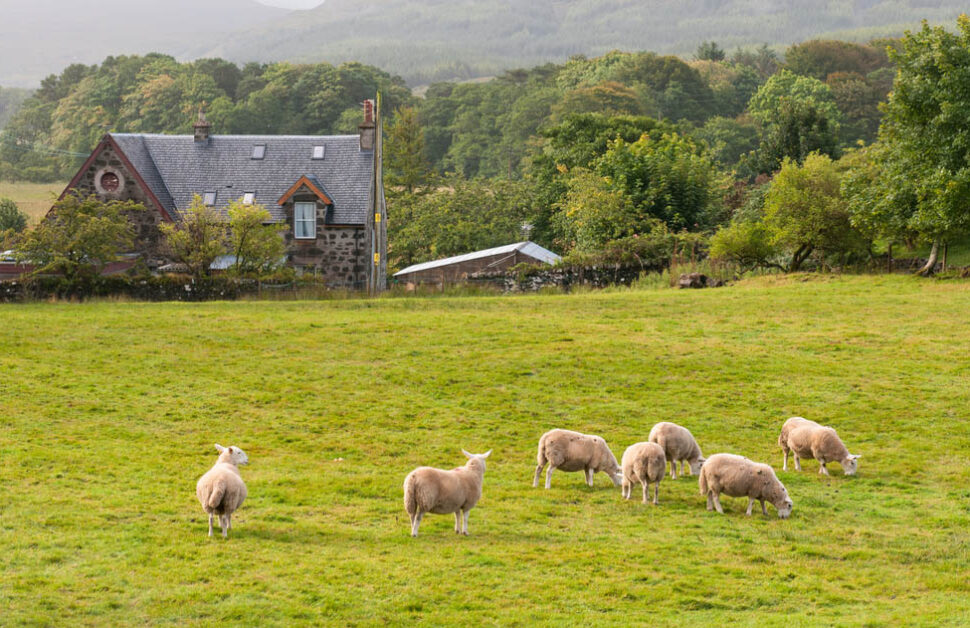Buying land isn’t as simple as just paying the asking price. Whether you’re looking for a secluded retreat, a smallholding, or a profitable rural business, understanding the true costs upfront is essential. Some expenses are obvious, like solicitor fees and surveys, while others—such as planning restrictions, access rights, or utility connections—can catch you off guard.
This section breaks down the key costs involved in buying land, from legal fees to infrastructure, so you can budget realistically and avoid nasty surprises.
1. The Price of Land Itself 🌍
The cost of land varies dramatically depending on location, zoning, and existing infrastructure. You might see agricultural land for as little as £5,000 per acre, while land with planning permission for housing can exceed £250,000 per acre. The biggest factors affecting price include:
- Location – Land in high-demand areas (near cities or tourist hotspots) is far more expensive.
- Planning Status – Land with full planning permission is much more valuable than land without.
- Access & Utilities – If land is already connected to roads, electricity, and water, it commands a premium.
- Soil & Flood Risk – Poor soil, steep gradients, or high flood risk can lower land value significantly.
- Size – Larger plots tend to be cheaper per acre but require higher upfront investment.
2. Legal & Survey Costs (£1,500–£5,000+) 📜
Even if the land price seems affordable, professional fees add up quickly. These include:
- Solicitor Fees (£1,000–£3,000) – Handling contracts, verifying land titles, and ensuring legal compliance.
- Land Registry Fees (£20–£1,105) – The cost of officially registering ownership based on land value.
- Searches & Due Diligence (£300–£1,000) – Checking for flood risks, contamination, and restrictive covenants.
🔹 Why do costs vary so much?
Larger or more complex plots require more legal work, especially if rights of way, covenants, or disputes exist. If planning history is unclear or contamination is suspected, additional reports will be required.
3. Stamp Duty Land Tax (SDLT) 🏛️
If your land purchase exceeds £150,000, Stamp Duty applies:
- £0 – £150,000: 0%
- £150,001 – £250,000: 2%
- £250,001+: 5%
🔹 Why do some land buyers pay no SDLT?
Agricultural land used for farming may qualify for tax relief, while smaller purchases under £150,000 avoid SDLT altogether.
4. Planning & Permission Costs (£200–£50,000+) 🏗️
If you plan to develop or change land use, planning costs can add up fast:
- Pre-Application Advice (£100–£500) – Recommended before applying for planning permission.
- Full Planning Application (£462 per dwelling) – The cost of submitting a formal application.
- Outline Planning Permission (£462 per 0.1 hectare) – A lower-cost option to test feasibility before full permission.
🔹 Why do some projects cost £50,000+?
Larger developments require specialist reports (ecology, flood risk, traffic impact, heritage assessments), each costing thousands. If an application is rejected, resubmissions and appeals increase costs significantly.
5. Infrastructure & Utility Costs (£5,000–£50,000+) ⚡
Land without utilities is cheaper to buy but expensive to develop. Connecting services can be a huge cost:
- Electricity (£5,000–£50,000+) – The further from the grid, the more expensive it is.
- Water (£5,000–£25,000+) – Mains connection is costly; boreholes can be an alternative.
- Septic Tank (£3,000–£20,000) – Required if no mains sewerage is available.
- Broadband (£100–£500) – Starlink or rural broadband may be necessary for remote locations.
🔹 Why is the price range so wide?
Utility costs depend on distance from existing infrastructure. If your plot is miles from the nearest mains supply, trenching and installation costs skyrocket. Off-grid solutions (solar power, rainwater harvesting) can be cheaper in the long run.
6. Road Access & Groundworks (£5,000–£50,000+) 🚜
Without suitable access, land may be useless for development. Improving access might include:
- New Driveway (Gravel or Hardcore) (£10–£50 per m²)
- Tarmac or Concrete Road (£50–£150 per m²)
- Legal Access Rights (£1,000–£10,000+) – If land is landlocked, you may need to negotiate access rights.
🔹 Why does access cost so much?
If land is accessed by private tracks, you may have to pay for road upgrades before councils approve development. Land without legal right of access can require expensive negotiations or even court cases.
7. Ongoing Costs (£500–£5,000+/year) 💷
Land isn’t a one-time cost—ongoing expenses include:
- Maintenance (Fencing, Mowing, Tree Care) – £500–£5,000/year.
- Council Tax (If Property is Built) – £1,200–£1,500/year.
- Business Rates (For Campsites, Rentals, etc.) – Varies based on revenue.
- Insurance (Public Liability, Fire, Flooding) – £200–£2,000/year.
🔹 Why do some landowners pay little to nothing?
If the land is used purely for agriculture or forestry, business rates may not apply. Keeping land undeveloped also avoids council tax.
Why Are Costs So Different Between Buyers? 🤔
Two landowners could buy similar plots but face very different costs. Some key reasons:
- Planning Status – If land already has permission, you avoid high planning & legal fees.
- Access & Utilities – If a plot has road access and mains services, costs drop significantly.
- Land Type & Restrictions – Green Belt, flood zones, or protected habitats increase survey & application costs.
- Business Use vs. Private Use – Business rates, environmental impact assessments, and licensing requirements add complexity.
- DIY vs. Professional Work – Self-builders or off-grid enthusiasts can save tens of thousands compared to those relying on contractors.

Leave a Reply